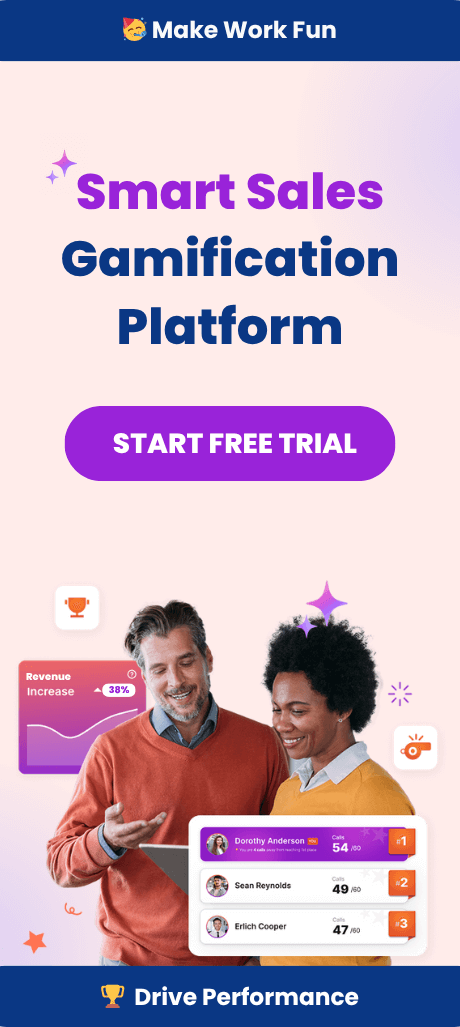Why Digital Leaderboards Drive Engagement
In boardrooms and virtual meetings across the globe, one question consistently surfaces: How can modern organizations foster meaningful employee engagement? With hybrid and remote work now the status quo, expectations about workplace connection and motivation have shifted. Today’s executive leaders are not just seeking outcomes but want to build team cultures that thrive on transparency, motivation, and shared progress. In this landscape, digital leaderboards have emerged as a critical lever for driving engagement, delivering both visibility and inspiration in a way traditional approaches cannot. This narrative explores the trajectory of digital leaderboards, why they succeed, and strategies executive teams can employ to tap their powerful potential.
The Engagement Imperative in Modern Teams
Before digital leaderboards appeared on the organizational scene, engagement was largely measured through annual surveys, sporadic recognition, or conventional incentive programs. While these tactics delivered incremental gains, they often failed to build sustained enthusiasm. Today, research demonstrates a direct correlation between employee engagement and core business results — from increased productivity to greater retention and customer satisfaction. According to Gallup, highly engaged teams show 21% greater profitability and experience significantly less turnover. For executives, the challenge is clear: engagement is no longer a side initiative but a core component of organizational strategy.
What Makes Digital Leaderboards Unique?
Digital leaderboards are more than digital scorecards. They synthesize data from multiple sources, visualize real-time performance, and foster a culture of friendly competition and recognition. Unlike static wall charts or quarterly reports, these platforms provide up-to-date feedback, fueling momentum in the flow of work. Customization options—such as dynamic metrics, tailored visual themes, and tiered challenges—enable companies to align leaderboards with their unique culture and objectives. What sets them apart is the psychological impact of visibility: employees see their efforts validated, while teams gain a transparent view of shared progress. This level of openness instills a sense of ownership and belonging that is difficult to replicate with traditional systems.
The Psychology Behind Leaderboards
Why do leaderboards work? At their core, they activate intrinsic motivators that drive human behavior. Public recognition, a healthy sense of competition, and the desire for mastery all come into play. Behavioral science tells us that people respond not only to rewards but also to visible status and incremental progress. This effect becomes even more pronounced in distributed teams, where spontaneous hallway praise or informal celebrations are rare. Digital leaderboards bridge that gap by turning progress into a tangible, shared experience.
Key intrinsic drivers supported by leaderboards include:
- Recognition: Public acknowledgment and celebration of achievements spark pride.
- Progress: Real-time tracking nurtures the human need to see growth and improvement.
- Belonging: Team-based leaderboards remind employees they are part of a unified mission.
Customizable Leaderboards: Tailoring the Experience
One size does not fit all in employee engagement. An enterprise sales team, a support desk, and a product development squad each have distinct drivers, KPIs, and cultural cues. This is where customizable leaderboards become invaluable. They allow leaders to define relevant metrics, set timebound contests, and select visual themes that resonate with their people. Granular controls enable managers to spotlight different achievements, whether it’s top sales closed, highest customer satisfaction scores, or most creative ideas submitted. With Spinify’s customizable leaderboard features, companies are elevating engagement with a level of personalization that truly speaks to individual and team ambitions.
The Link Between Real-Time Feedback and Motivation
Traditional feedback loops have always struggled with time lag. By the time quarterly reviews occur, opportunities to correct course or amplify positivity may have already passed. Digital leaderboards, in contrast, update in real time or near-real time, enabling immediate visibility into progress and setbacks. This cadence creates a dynamic accountability structure that brings both challenge and support to the front line. It also empowers managers to act when recognition or intervention can have greatest impact. This timely visibility:
- Fuels momentum during performance surges
- Prevents small setbacks from becoming systemic issues
- Opens micro-moment opportunities for coaching and compliments
When integrated with coaching frameworks, these platforms offer a continuous loop that encourages consistent improvement and heightened morale.
Digital Leaderboards and Hybrid Work
Remote and hybrid work models present fresh opportunities and hurdles in maintaining engagement. In a vacuum, it becomes easy for high-performing contributors to feel isolated and for managers to lose sight of who needs support. Leaderboards counteract this risk by ensuring that everyone remains connected to shared goals and collective benchmarks. Transparent progress is visible across geographies and hierarchies, unraveling the silos that can otherwise form. Notably, gamified leaderboards such as those powered by Spinify help keep distributed teams motivated, driving engagement even when employees are not co-located. As organizations implement more flexible work arrangements, these solutions are increasingly indispensable.
The Strategic Edge of Gamification
Gamification is rarely just about playing games—it is about applying the psychology of gaming to real-world business scenarios. In industries as varied as fintech, insurance, and SaaS, gamification-driven leaderboards are reshaping how teams approach their most pressing challenges. Successful examples include setting up performance tiers, introducing friendly competitions, and layering in surprise rewards for milestones reached. The emotional lift derived from game-like engagement underpins the sustained success of this approach. For a deeper look at how gamification is influencing high-performance teams, see our feature on gamification’s evolution.
Features to Look for in Engagement Platforms
With the rise in available platforms, executives must choose engagement tools that address both the needs of employees and the strategic objectives of the business. Consider prioritizing:
- Customizable metrics: Ensure the platform allows for unique KPIs that reflect your specific business needs.
- User-friendly interfaces: Look for intuitive dashboards that enable all users to engage without steep learning curves.
- Integration capabilities: Seamlessly sync data with CRM, HRIS, or other performance systems.
- Real-time feedback: Prioritize solutions with instant or near-instant updates.
- Scalability: Select technology that grows with your organization and adapts to new priorities.
Platforms that excel in these areas, such as those reviewed in our article on performance dashboards, consistently deliver higher engagement rates and smoother adoption curves across teams.
Integrating Digital Leaderboards into Company Culture
When implemented intentionally, digital leaderboards become more than performance trackers—they are culture shapers. By embedding them into routine communications, all-hands meetings, and ongoing recognition programs, companies create new traditions. For instance, celebrating leaderboard milestones at regular intervals fosters a rhythm of appreciation. This strengthens the connection between business outcomes and the daily actions of every team member. It also signals leadership’s commitment to transparency, meritocracy, and shared achievement.
Overcoming Resistance and Driving Adoption
Like any change initiative, the rollout of digital leaderboards may spark questions or hesitation, especially from teams accustomed to older processes. Successful adoption hinges on two critical fronts: communication and design. Communicate the purpose of the leaderboard clearly, linking it to both individual rewards and organizational goals. Involve team members in metric selection, so KPIs reflect what truly matters. Finally, ensure regular touchpoints and showcase early wins—these reinforce participation and demonstrate tangible value.
Evaluating Performance: Metrics That Matter
No digital leaderboard initiative is complete without a thoughtful evaluation approach. Beyond leaderboard positioning, leaders should track engagement rates, employee sentiment, and downstream business results such as sales growth or customer retention. Advanced platforms integrate sentiment analytics, giving deeper insights into morale shifts. Companies can also benchmark performance before and after deployment, examining patterns that arise from increased visibility and friendly rivalry. This continuous improvement loop ensures leaderboards remain fresh, relevant, and outcome-driven.
Case Study: Digital Leaderboards in Action
Consider a nationwide sales team navigating both remote work and an aggressive growth target. Prior to implementing digital leaderboards, recognition was sporadic and performance metrics often arrived too late to inspire change. Leadership launched a customizable leaderboard cycling through KPIs such as deals closed, upsell revenue, and customer feedback ratings. As the leaderboard gained traction, engagement scores rose by 17% over two quarters. Qualitative feedback highlighted a renewed sense of camaraderie, as team members rooted for each other while striving for personal bests. This transformation echoes patterns seen in companies like those detailed in our article on retention and productivity.
Digital Leaderboards and the Future of Engagement
Looking ahead, digital leaderboards are not a fleeting trend. They are becoming a foundational pillar in the new era of transparent, gamified, and data-driven workplaces. As AI-driven analytics, hyper-personalization, and seamless integrations continue to advance, the impact of these platforms will only deepen. Executive leaders who invest in these solutions today are setting up their organizations for long-term engagement and sustainable growth.
Next Steps for Executive Teams
If you are leading a team or organization, consider where your engagement strategy stands today. Are your team members connected to a narrative of progress and belonging, or does recognition feel like an afterthought? Assess how robustly your organization measures real-time performance, and whether visibility into success is equally accessible for all. For leaders ready to explore digital leaderboards, offerings like Spinify’s live demo and trial options enable you to see the power of real-time engagement first-hand. The path to sustained employee motivation and organizational excellence may be just a leaderboard away.



